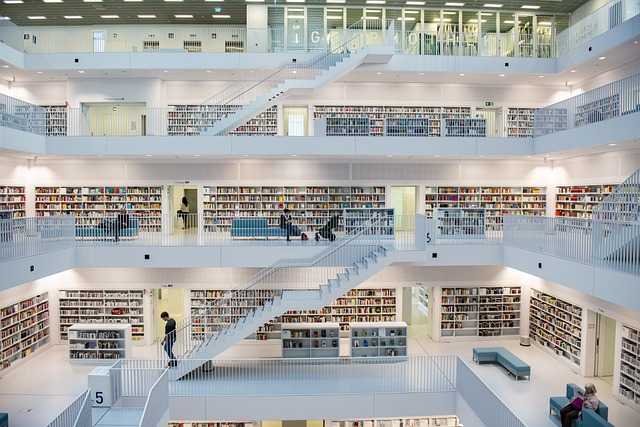Table of Contents
- Exploring the Historical Significance of Jesus in Artistic Expression
- Diverse Artistic Interpretations of Jesus Across Cultures
- Modern Artists Reimagining the Figure of Christ
- Engaging with Art: Recommendations for Experiencing Jesus Through Art
- Q&A
- To Conclude
Exploring the Historical Significance of Jesus in Artistic Expression
The figure of Jesus has been a powerful muse for countless artists throughout history, inspiring a rich tapestry of creative expression across different cultures and time periods. From the Byzantine mosaics to the Renaissance masterpieces, artists have utilized various mediums to convey the spiritual and moral teachings of Christ. These works often reflect the sociopolitical landscapes of their time, merging theology with artistic innovation. They create a profound dialogue between the divine and the viewer, allowing the audience to engage with complex themes of faith, sacrifice, and redemption.
Notable Artistic Movements:
- Byzantine Art: Centered on iconography that emphasized the divine nature of Jesus, often characterized by gilded backgrounds and elongated figures.
- Renaissance: Marked by a return to realism and humanism, artists like Michelangelo and da Vinci portrayed Jesus in ways that highlighted his humanity and emotional depth.
- Baroque: Known for its dramatic use of light and shadow (chiaroscuro), Baroque art often depicted Jesus in scenes of intense emotional and physical struggle.
- Modern Art: Contemporary interpretations have challenged traditional representations, offering new insights into Jesus’ teachings related to social justice and compassion.
In addition to visual arts, literature and music have also explored the significance of Jesus, offering narratives and compositions that delve into his life and legacy. For instance, the gospel hymns and passionate oratorios convey the emotional resonance of biblical stories. Thematic explorations, such as suffering, hope, and resurrection, find their place in various art forms, often transcending cultural barriers and offering universal messages. This cross-pollination between visual arts and other mediums enriches the discourse and provides a more holistic understanding of Jesus’ role in human history.
Moreover, the cultural legacy of Jesus-themed art continues to shape modern society. In contemporary galleries and installations, artists reflect upon historical depictions while reimagining them through a present-day lens. This not only honors the traditional interpretations but also questions and challenges the status quo. As society grapples with issues like inequality and identity, art serves as a reflective surface, inviting viewers to engage with the implications of Jesus’ message in today’s world. Through this ongoing exploration, the historical significance of Jesus in artistic expression remains a vibrant and evolving narrative.


Diverse Artistic Interpretations of Jesus Across Cultures
The portrayal of Jesus through the lens of different cultures reveals a tapestry rich with diverse narratives and artistic expressions. In Europe, for instance, the Renaissance period brought forth a wave of iconic paintings that emphasized realism and human emotion. Artists like Michelangelo and Caravaggio infused their works with a sense of drama and divine beauty, reflecting the Eurocentric theological interpretations of the time. Their masterpieces, characterized by vivid colors and intricate details, invited viewers to engage with the spiritual dimensions of Christ’s life.
Meanwhile, in Africa, depictions of Jesus often reflect local cultural themes and aesthetics. Many artists integrate traditional motifs and symbols into their representations, celebrating the harmony between spirituality and everyday life. For example, in some African communities, Jesus is portrayed in traditional attire, capturing cultural nuances that resonate deeply with the local believers. This blending of artistic styles not only honors the significance of Jesus but also emphasizes a unique cultural identity that is distinctly African.
In Asian cultures, the interpretation of Jesus varies widely, often incorporating Buddhist or Hindu elements. Eastern artists may represent Jesus with serene expressions and simplistic forms, aligning him more closely with the philosophies prevalent in these religions. For instance, a depiction might feature Jesus in a meditative pose, integrating spiritual symbolism familiar to local traditions. This approach not only democratizes the representation of divinity but also invites interfaith dialogue that highlights shared values among different belief systems.
| Region | Artistic Elements | Common Themes |
|---|---|---|
| Europe | Renaissance Art, Realism, Emotional Depth | Humanity, Sacrifice |
| Africa | Traditional Motifs, Local Attire | Cultural Identity, Community |
| Asia | Simplistic Forms, Meditative Poses | Interconnectedness, Spirituality |
These artistic interpretations of Jesus not only showcase the ingenuity of cultures but also serve as a testament to the universal relevance of his teachings. The way different communities visualize Christ allows for a deeper understanding of how spirituality interacts with cultural identity. Each piece of artwork, whether it is a mural, a sculpture, or a painting, carries a narrative steeped in history, community values, and the shared human experience of seeking meaning in devotion.


Modern Artists Reimagining the Figure of Christ
In contemporary art, the figure of Christ is being reimagined through diverse lenses, reflecting the complexities of modern spirituality and cultural identity. Artists are exploring themes of resurrection, suffering, and hope, simultaneously challenging and reaffirming traditional narratives. This fresh perspective allows viewers to engage with the figure of Christ in new and profound ways, prompting reflection on both personal and collective belief systems.
Many modern artists employ a variety of mediums to reinterpret this iconic figure. For instance, multimedia installations often juxtapose religious imagery with elements of popular culture, creating a dialogue between sacred and secular worlds. Some notable techniques include:
- Digital art, using technology to create immersive experiences that resonate with today’s audience.
- Sculpture, where materials like recycled objects evoke themes of resurrection and renewal.
- Performance art that embodies the narrative of sacrifice, engaging viewers in dynamic and interactive ways.
Symbolism plays a crucial role in these modern interpretations, as artists imbue their work with layers of meaning that challenge conventional representations. For example, the crucifix is often reinterpreted, shifting away from a sole focus on suffering to highlight themes of resilience and redemption. This evolution encourages a reexamination of the relationship between the divine and humanity, inviting audiences to find their own connections to the sacred.
Through exhibitions and public installations, these reimagined representations create spaces for dialogue and contemplation. To illustrate the impact of this artistic movement, here’s a brief overview of notable artists and their contributions:
| Artist | Medium | Key Work |
|---|---|---|
| Marc Chagall | Painting | The White Crucifixion |
| Gregory Crewdson | Photography | Untitled (Messiah) |
| Carrie Mae Weems | Mixed Media | To Die in a Broken World |


Engaging with Art: Recommendations for Experiencing Jesus Through Art
To fully appreciate the spiritual message depicted through art, immerse yourself in masterpieces that reflect the life and teachings of Jesus. Each artwork can serve as a portal to understanding his character and mission. Consider visiting local galleries or museums where religious artworks are showcased, allowing you to witness the details up close. Many institutions also offer guided tours that explore the historical context and significance of these pieces, enhancing your appreciation for their spiritual depth.
Engaging with art can also be a personal experience. Set aside time to contemplate artworks at home or in serene spaces—museums or churches typically provide calming environments perfect for this. You might find it useful to keep a journal during this process. Reflect on your thoughts and feelings in response to the pieces, noting how they resonate with your faith journey. This introspective method can deepen your connection to Jesus’ messages and amplify your understanding of his teachings.
Consider participating in community art events focused on religious themes. These gatherings often foster discussions that can lead to enriching exchanges with other participants. Here’s a quick table of activities you might engage in:
| Activity | Description |
|---|---|
| Art Workshops | Create your own artwork inspired by biblical themes. |
| Gallery Tours | Explore religious artwork with an expert guide. |
| Discussion Panels | Engage in conversations with artists and theologians. |
Lastly, don’t underestimate the power of digital platforms. Online galleries and virtual exhibitions have become increasingly popular, allowing you to experience art in your own space. Many organizations dedicate sections of their sites to religious art and provide resources that discuss the imagery and symbolism behind each piece. Follow artists and art historians on social media to gain fresh perspectives and updates on current exhibitions. This approach not only broadens your artistic horizons but also fosters a community of like-minded individuals seeking to explore the intersection of faith and art.
